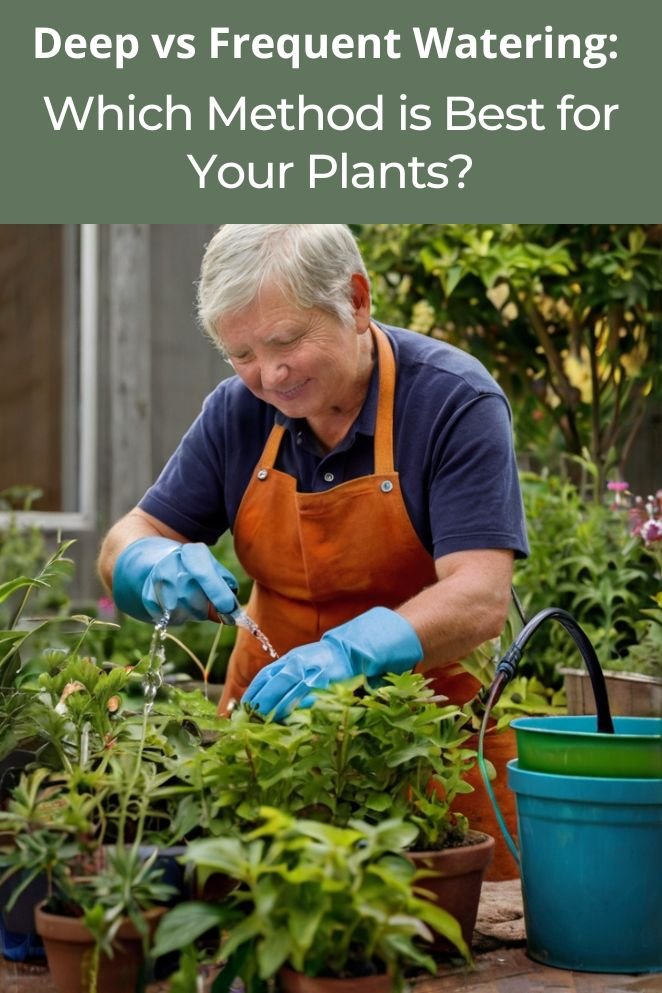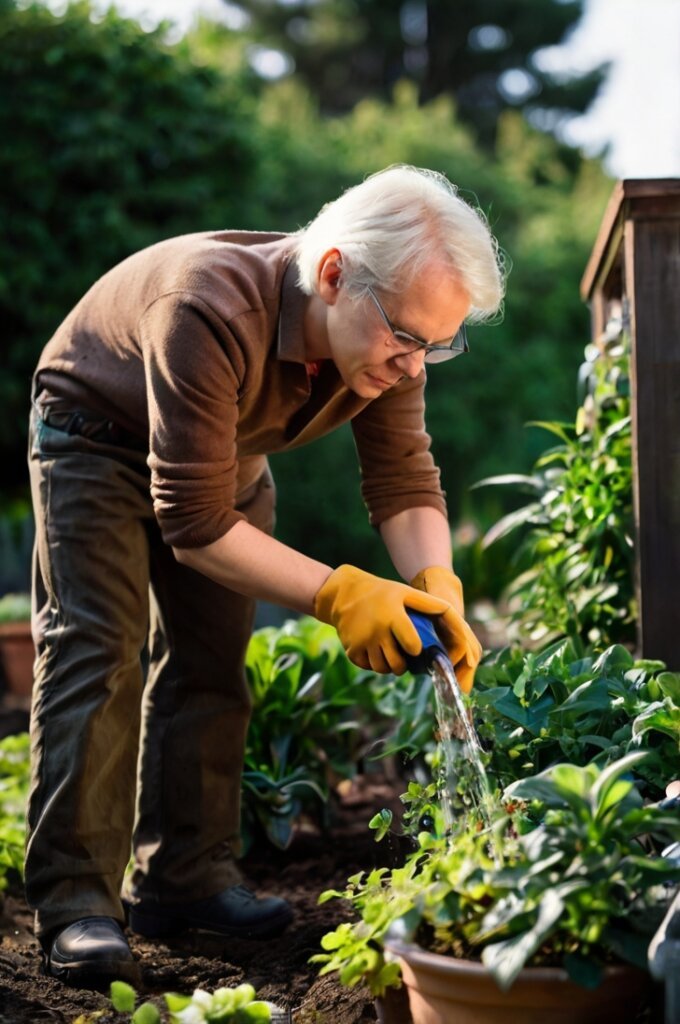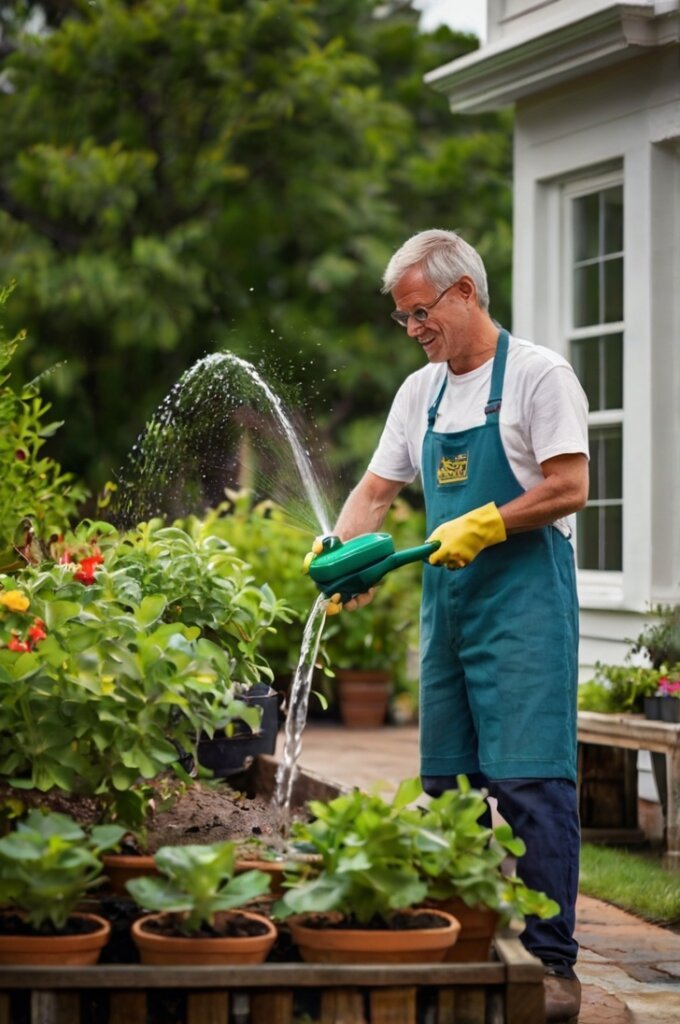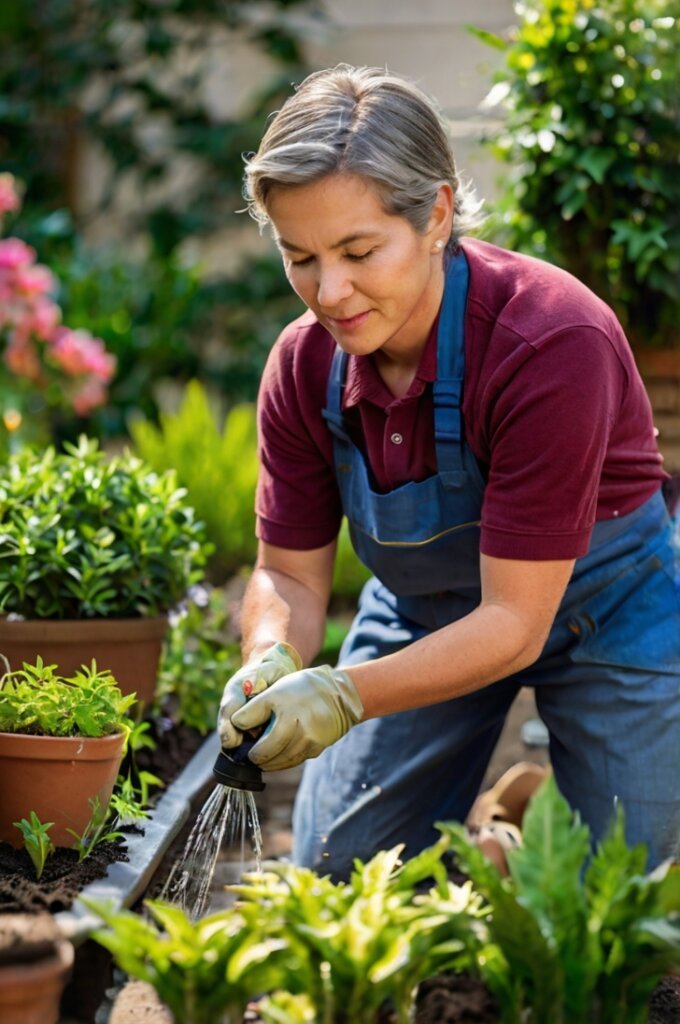
Watering your plants might seem like a straightforward task, but when it comes to keeping them healthy and thriving, the method you choose can make a big difference.
Two common watering techniques are deep watering and frequent watering.
But what do these methods involve, and which one is better for your garden? In this post, we’ll dive into the details of deep watering and frequent watering, exploring the benefits and drawbacks of each approach.
By understanding the needs of your plants and the conditions in your garden, you can find the perfect balance to keep your plants happy and healthy.
Deep Watering
Deep watering is a technique that involves thoroughly soaking the soil to ensure water penetrates deep into the root zone of a plant.
Unlike surface watering, which only moistens the top layer of soil, deep watering allows water to reach the deeper layers where roots extend, encouraging plants to develop stronger and deeper root systems.
Benefits
Encourages strong root systems
Deep watering helps plants develop strong, deep roots.
By allowing water to penetrate further into the soil, plants are encouraged to grow their roots downwards.
This makes them more stable and better able to access moisture that is deeper in the ground.
This is particularly valuable during dry spells when water is scarce.
Research from HortTechnology has shown that deep watering promotes a more extensive root system, enhancing a plant’s ability to survive drought conditions.
- Read also: DIY Plant Watering System: Keep Your Plants Hydrated
- Read also: Nurturing Greenery: A DIY Potted Plant Watering System Guide
Reduces water loss
When you water deeply, less water evaporates from the soil surface.
Instead of sitting on top and quickly disappearing, the water reaches deeper layers of the soil, where it’s more readily absorbed by the plant.
This means that more of the water you use actually benefits the plant, rather than being lost to evaporation, especially on hot days.
Prevents overwatering
Deep watering helps avoid the problem of overwatering, which can cause issues like waterlogged soil and root rot.
Because deep watering is less frequent, the soil has a chance to dry out between watering sessions.
This is particularly useful for plants that prefer not to have consistently wet roots, as it keeps the soil conditions healthier for them.
Drawbacks
While deep watering has many benefits, there are also some potential drawbacks to consider:
Timing and consistency are crucial
Deep watering requires a good understanding of your plants’ needs and the soil conditions in your garden.
If not done correctly, deep watering can lead to water stress in plants.
For instance, if deep watering is done too infrequently or in insufficient amounts, the soil may not retain enough moisture to sustain the plants between waterings.
Labor-intensive for larger gardens
Deep watering can be more demanding, especially if you have a large garden or many plants.
It often requires extra time and effort to ensure that each plant gets enough water.
This can be a significant task if you’re managing a big garden or multiple garden beds, as you’ll need to check and adjust your watering routine regularly.
Not suitable for all soil types
Some soil types, such as heavy clay, may not absorb water quickly, making deep watering less effective.
In these cases, water can run off the surface before it has a chance to penetrate deeply into the soil.

Frequent Watering
Frequent Watering is a technique that involves applying smaller amounts of water to plants at regular, often short intervals.
This method is typically used to maintain consistent soil moisture, especially in conditions where the soil tends to dry out quickly or where plants have high water needs.
Benefits
Frequent watering involves applying smaller amounts of water to plants more regularly.
This method can be beneficial in certain situations and for specific types of plants.
Maintains consistent soil moisture
Frequent watering helps maintain consistent soil moisture levels, which can be beneficial for plants that prefer consistently moist conditions.
This method is particularly useful for shallow-rooted plants that may not be able to access deeper moisture.
Prevents drought tress
By providing regular moisture, frequent watering can prevent drought stress, especially in hot weather or for plants with high water needs.
A study in the Journal of Plant Nutrition showed that frequent watering helps maintain optimal growth and reduces the risk of water stress in sensitive plants.
Easier to manage in containers
For container gardening, frequent watering can be more practical.
Pots tend to dry out faster than garden beds, so plants in containers often need more frequent watering to stay hydrated.
This method helps ensure that container plants get the consistent moisture they need.
Drawbacks
Despite its benefits, frequent watering also has some disadvantages:
Risk of shallow root development
When plants are watered frequently with small amounts, they may develop shallow root systems.
Shallow roots make plants more vulnerable to drought because they cannot access deeper moisture reserves.
Increased water loss to evaporation
Frequent watering often means more water is lost to evaporation, especially if watering is done during the heat of the day.
This can be less efficient and may require more water overall to achieve the same level of hydration for your plants.
Higher risk of overwatering
Frequent watering can lead to overwatering, which can cause root rot and other issues.
Over time, constantly wet soil can suffocate roots, reducing their ability to absorb oxygen and nutrients effectively.

Finding the Right Balance
So, which method is better: deep watering or frequent watering?
The truth is, there’s no one-size-fits-all answer.
The best approach depends on several factors, including the type of plants you’re growing, the soil conditions, the climate, and your gardening goals.
For most garden plants, a combination of both methods might be ideal.
Here’s how you can find the right balance:
Know your plants
Different plants have different water requirements.
For instance, drought-tolerant plants like succulents and some perennials do well with deep watering.
This allows their roots to reach down into the soil for moisture.
On the other hand, plants like certain annuals and vegetables often need more frequent watering because their roots are closer to the surface and need regular moisture to stay healthy.
Monitor soil moisture
It’s important to keep an eye on how moist your soil is.
You can use a soil moisture meter for precise readings or simply check the soil with your hands.
If the soil feels dry a few inches below the surface, it’s a sign that deep watering might be needed.
If the soil is consistently moist, you might be able to reduce how often you water.
Adjust for climate
The climate where you live affects how often you should water.
In hot, dry climates, you’ll likely need to water more frequently to keep the soil from drying out.
In cooler, more humid areas, deep watering may be enough to meet your plants’ needs since the soil retains moisture better.

Additional Watering Considerations
Aside from the frequency and depth of watering, there are a few additional factors to keep in mind:
Time of day
Watering at the right time can help your plants make the most of the water you provide.
Early morning or late evening is the best time to water because temperatures are cooler and there is less evaporation.
This allows the plants to absorb moisture before the sun heats up the soil.
Avoid watering during the hottest part of the day to reduce water loss.
Mulching
Using mulch around your plants can significantly improve watering efficiency.
Mulch helps retain soil moisture by reducing evaporation and also helps keep the soil temperature stable.
This is beneficial whether you’re using deep or frequent watering methods.
Soil type
Understanding your soil type helps tailor your watering approach.
Sandy soils drain quickly and may need more frequent watering to stay moist.
Clay soils, on the other hand, hold water longer but can become waterlogged if overwatered.
- Read also: Nurturing Greenery: A Guide to DIY Plant Watering Globes
- Read also: Hydration Innovation: DIY Plant Watering Bottle Ideas
Final Thoughts
Whether you choose deep watering, frequent watering, or a combination of both, the key is to understand the specific needs of your plants and your garden’s conditions.
By paying attention to these factors and adjusting your watering practices accordingly, you can keep your plants healthy, vibrant, and thriving.
FAQs
It depends on your plants’ specific needs, soil type, and climate. Check soil moisture regularly and adjust your watering schedule based on how quickly the soil dries out.
Not necessarily. Deep watering is generally better for plants with deep root systems, while shallow-rooted plants may benefit more from frequent watering.
To prevent overwatering, check soil moisture before watering and ensure your soil has good drainage. Avoid watering too frequently, and let the soil dry out between waterings.
Early morning or late evening is the best time to water plants, as this reduces water loss due to evaporation and allows plants to absorb moisture before the day’s heat.
Mulching helps retain soil moisture, reduces evaporation, and regulates soil temperature, which can reduce the need for frequent watering.



